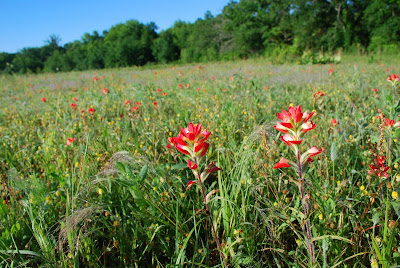


Turkey Vulture - Cathartes aura 2















During the walk I could hear a strange, yet familiar call coming from west of the refuge. Later, while driving on the gravel road next to the refuge I encountered a man photographing something in a tree with a large telephoto lens. He informed me he was taking photos of a Barred Owl, which was probably what was making the strange noise I heard earlier.
I walked along the boardwalk between the observation deck and the nature trail. Unfortunately the nature trail was thick with mosquitoes, so I opted instead to trek over to the photographic blind found to the south of the boardwalk.
During the walk to the photographic blind I spotted several Carolina Chickadees, a couple of Tufted Titmice, and a few Blue-Gray Gnatcatchers. I noticed that a pavilion has been erected alongside the path, most likely intended as a place for people to eat lunch. The last time I was at Cussetah Bottoms a bulldozer was in the process of clearing the space for the future pavilion.Strangely, there was little activity at the photographic blind as well. I saw a single Great Blue Heron flying lazily over the field behind the blind towards the Deep Fork River. The metallic call of a male Brown-headed Cowbird alerted me to the bird's presence.
I walked back along the path to the parking area, pausing to focus my binoculars on a Red-bellied Woodpecker climbing the trunk of one of the larger trees. I loaded my gear into the car and began the short drive to my next destination, the Montezuma Creek area of Deep Fork NWR.